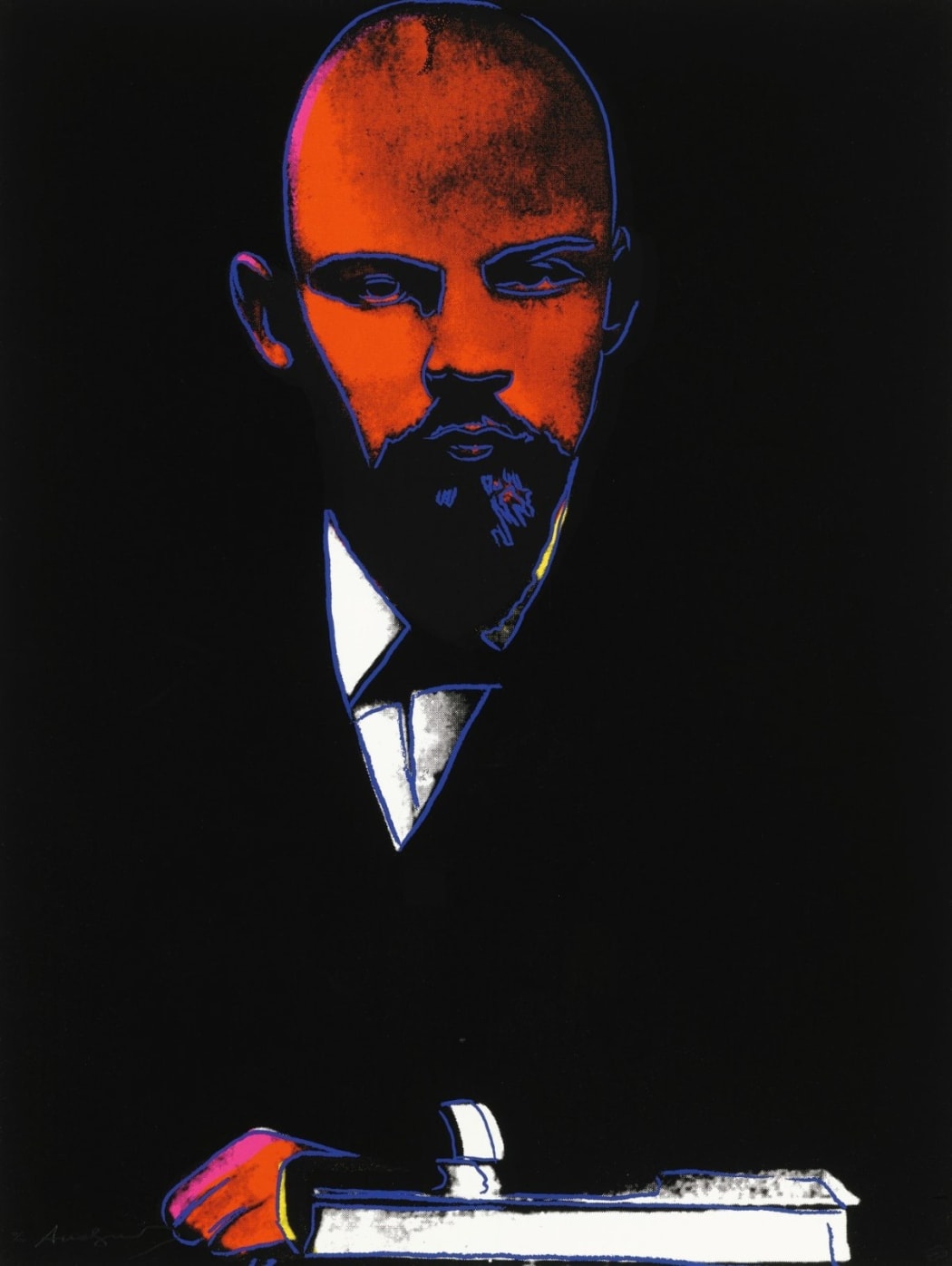
Mao F & S II. 90 -99
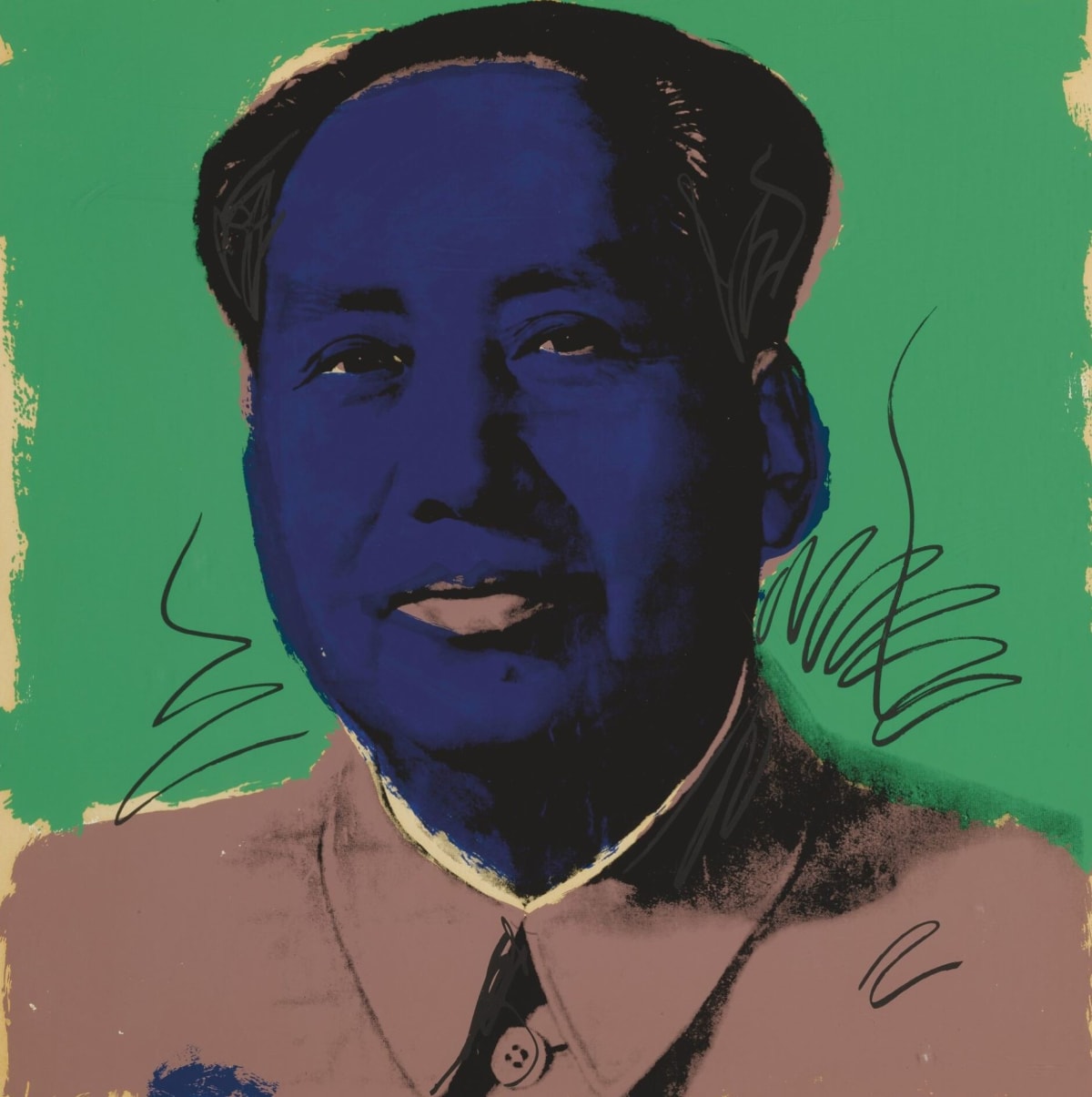
Andy Warhol's "Mao" portfolio, comprising ten screenprints created in 1973, stands as a compelling testament to the artist's unique ability to capture the essence of the most prominent figures of his time. Produced shortly after the visit of the U.S. President to China, this portfolio offers a poignant example of Warhol's talent in portraying iconic personalities.
Among the figures Warhol chose to immortalize, none could be more emblematic of his thematic concerns than Mao Zedong. Rather than celebrating celebrity, Warhol's fascination lay in the examination of the dangers of unchecked power—a theme vividly embodied by Mao. In a totalitarian society like the People's Republic of China, Mao's image was omnipresent, echoing the very image that Warhol recreated in these prints.
In this series of prints, Mao's frontal portrait engages the viewer with a commanding gaze, creating an imposing impression. The original image, extracted from Mao's 'Little Red Book,' a compilation of the dictator's speeches and writings, carries a certain formality that Warhol found artistically intriguing due to the emotional distance it provided. Warhol's signature vibrant silk-screening process, however, transforms the seemingly menacing tone into something that verges on caricature. In one rendition, featuring bright blue, green, and pink hues (F&S II.93), Mao, with his vivid pink lips and a green-painted face, takes on an appearance reminiscent of makeup.
Warhol's characteristic wit and inventiveness shone through when he remarked about China: "The only picture they have is of Mao Zedong. It's great. It looks like a silkscreen." In these words, Warhol recognized the boundless potential of mass-produced images within his artistic repertoire—a departure from centuries of art history that privileged originality and uniqueness. Today, Warhol's portraits of Mao continue to transcend their historical context, emphasizing the immense power of a single image.
As Warhol's close friend and writer Bob Colacello noted, Warhol's icons "were all about what people worship in an irregular or secular world." In the contemporary digital age, where images proliferate endlessly, this notion retains its profound relevance. Warhol's "Mao" portfolio serves as an enduring testament to the artist's ability to distill the significance of an image, illuminating the complexities of a world where images have become an omnipresent language of their own.
Vote McGowen F & S II. 94
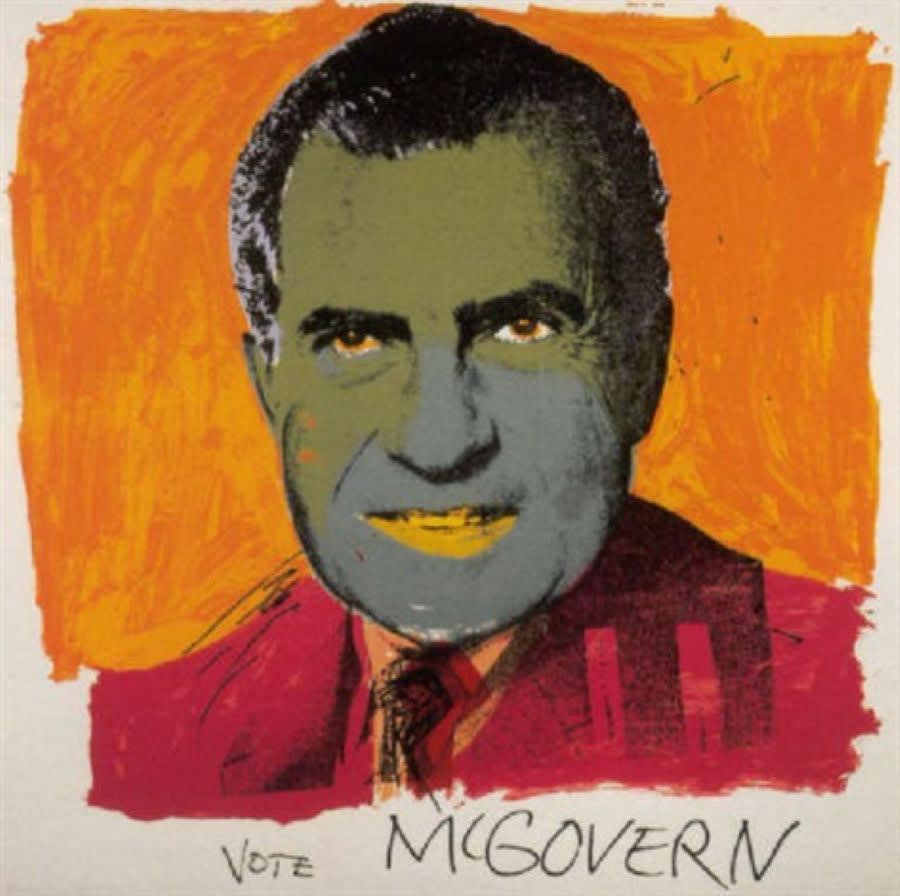
In the year 1972, amidst a fervent presidential campaign, Andy Warhol unveiled "Vote McGovern," a striking screenprint that would become a symbol of his rare foray into the realm of political expression. While Warhol was renowned for his portraits and prints featuring prominent political figures, these works were often imbued with a broader cultural significance, as exemplified by his iconic depiction of Mao Zedong. However, "Vote McGovern" stands apart as a significant testament to Warhol's political stance.
Created in enthusiastic support of George McGovern's presidential campaign that same year, "Vote McGovern" is more than just a work of art—it's a visual embodiment of Warhol's engagement with the political zeitgeist of the time. In his characteristic style, Warhol portrays the Democratic candidate in a vibrant palette, featuring an unconventional blue complexion and a distinctive pink suit.
In this print, Warhol offers a unique perspective on the political landscape, using his artistic prowess to infuse a sense of intrigue and commentary into the image. The unnatural colors serve as a visual commentary, highlighting the artificiality and theatricality often associated with politics. By portraying McGovern in such a manner, Warhol invites viewers to contemplate the performative nature of political campaigns and the personas crafted for public consumption.
"Vote McGovern" is a testament to Warhol's ability to transcend his role as a mere artist and venture into the realm of socio-political commentary. While it may be a rare instance of his direct political engagement, it remains an important artifact of a turbulent era in American politics, capturing the essence of a pivotal campaign and the broader cultural implications of that moment in history.
Beyond its artistic significance, "Vote McGovern" serves as a reminder of the power of art to encapsulate the spirit of an age and provoke contemplation about the complexities of the world. In this print, Warhol's brushstrokes become a medium through which political discourse is conducted, offering us a glimpse into the artist's multifaceted talents and his willingness to engage with the pressing issues of his time.
Flash Porfolio F & S II. 32 - 43
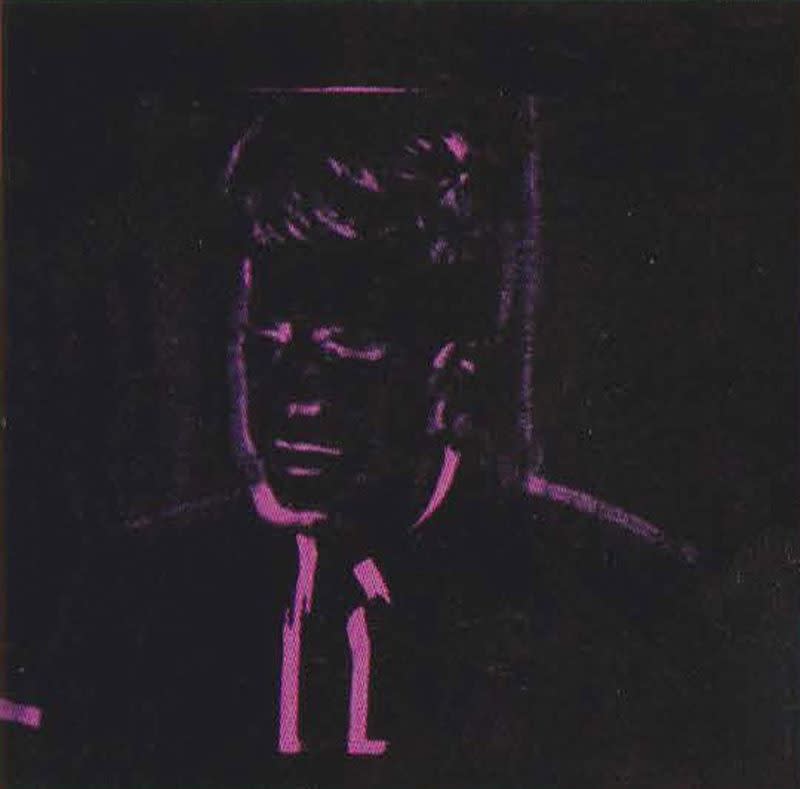
In the annals of art history, Andy Warhol's name is synonymous with innovation, audacity, and a relentless exploration of contemporary culture. One of his most intriguing and evocative works, the "Flash Portfolio," created in 1963, comprises eleven screenprints that delve deep into the shocking assassination of U.S. President John F. Kennedy. A visual and intellectual tour de force, this portfolio melds the realms of color prints, colophon, and teletype text on paper to craft a striking narrative.
"Flash" was the vehicle for this arresting artistic exploration—a contemporary art magazine that continues to grace print today, celebrated for its dedication to avant-garde artists. Within its pages, Warhol's "Flash Portfolio" emerges as a testament to his unique ability to dissect the impact of tragic events through the lens of the ever-churning news cycle.
At the heart of Warhol's creative process lay a profound fascination with the relentless barrage of news and the media circus that surrounded significant events. Few occurrences in his lifetime epitomized this phenomenon more than the assassination of President Kennedy. In this series, Warhol masterfully manipulates images and text culled from the news, presenting them in a kaleidoscope of colors that reflect the myriad emotions and perspectives that emerged in the wake of this tragedy.
What sets the "Flash Portfolio" apart is Warhol's deliberate choice to render the prints with low contrast, imparting an almost negative-like quality to the images. This artistic decision imbues the work with a ghostly, haunting quality, mirroring the unsettling atmosphere that enveloped the nation at the time of Kennedy's death. Warhol himself encapsulated the sentiment surrounding the event with his poignant observation: "It seemed no matter how hard you tried, you couldn't get away from the thing."
In essence, Warhol's "Flash Portfolio" serves as a poignant exploration of the intersection between art and the relentless, often overwhelming, tide of news media. It encapsulates the artist's unique ability to distill complex, culturally significant moments into evocative visual narratives, offering viewers a glimpse into the omnipresent nature of the news cycle and the indelible marks it leaves on our collective psyche.
As we look back at this work today, it remains a testament to Warhol's enduring impact on the art world and his unwavering commitment to confronting the socio-political realities of his time. The "Flash Portfolio" stands as a vivid reminder that, in Warhol's hands, even the most tragic and tumultuous events can become a canvas for artistic reflection and exploration.
Edward Kennedy F & S II.240
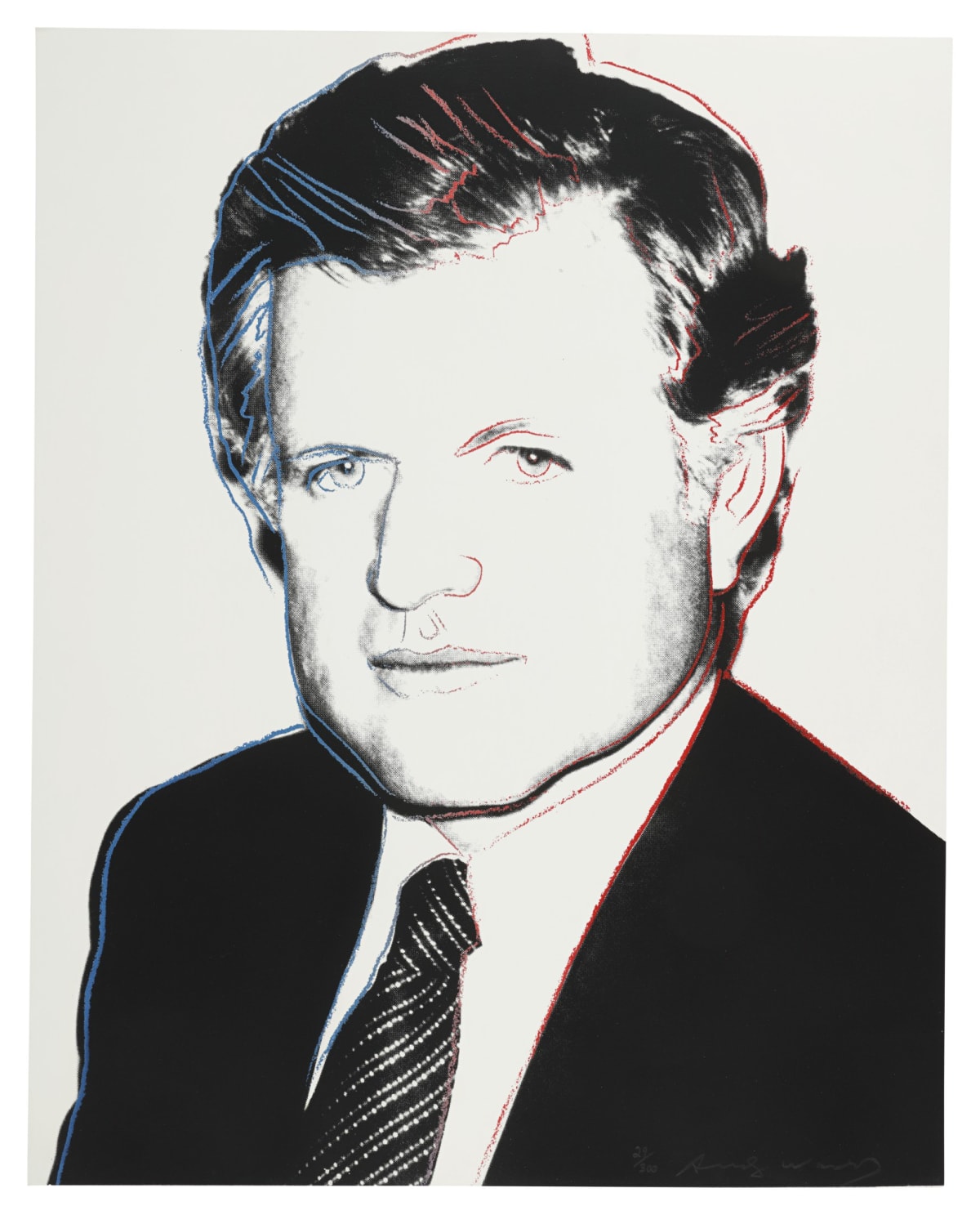
Within the expansive canvas of Andy Warhol's artistic oeuvre, a portrait of Edward Kennedy, the esteemed Democratic senator and a prominent figure within the illustrious Kennedy family, emerges as a captivating and thought-provoking masterpiece.
In this portrayal, Edward Kennedy assumes a grave and unsmiling countenance, attired in formal dress. Amidst the broader tapestry of Warhol's work, this portrait takes its place alongside a series of commissions undertaken at the behest of influential politicians and public figures. Notably, Warhol's portfolio includes portraits of luminaries such as Jimmy Carter and George McGovern. However, Edward Kennedy's portrait holds a distinct place in this collection, for it was conceived with a specific purpose in mind: to generate financial support for the Democratic campaign. This unique origin renders the work quite rare, as it was initially crafted for the benefit of campaign donors.
Edward Kennedy's prominence within the Kennedy dynasty sets this portrait apart from Warhol's other political portraits. While the artist did create a compelling series of works featuring Jackie Kennedy and delved into the profound subject of John F. Kennedy's assassination, the Kennedy family occupied a singular and indelible space in the American psyche. They stood at the intersection between politics, glamour, and tragedy—a potent combination that continues to intrigue and captivate generations of Americans.
Warhol's portrayal of Edward Kennedy not only immortalizes a significant political figure but also encapsulates the enduring mystique of the Kennedy legacy. The somber, serious demeanor captured in this portrait hints at the weight of responsibility borne by Edward Kennedy as a guardian of the Kennedy family's political heritage. It is a testament to Warhol's ability to infuse his subjects with depth and complexity, transcending the superficialities of celebrity to delve into the essence of his sitters' characters.
In conclusion, Andy Warhol's portrait of Edward Kennedy stands as a poignant testament to the intersection of politics, art, and legacy. It serves as a reminder of Warhol's capacity to elevate his subjects beyond the realm of mere portraiture, transforming them into powerful symbols that resonate with historical significance. As we contemplate this portrait today, we are invited to reflect on the enduring impact of the Kennedy family and the indomitable spirit that has defined their place in American history.
Jimmy Carter (F & S II.150)

In the realm of American politics and contemporary art, the 1970s marked a period of dynamic convergence. One striking testament to this fusion is Andy Warhol's "Jimmy Carter I," the inaugural screenprint in a trilogy released in 1976, capturing the essence of the then-presidential candidate, Jimmy Carter. Commissioned by Carter himself for the Democratic committee, this artwork was a bold attempt to mobilize and engage young voters—an endeavor that underscored Warhol's social and political relevance.
In this portrait, Jimmy Carter is portrayed with an air of solemnity and formality, dressed in a suit, and with his hand thoughtfully resting on his chin. Characteristic of Warhol's artistic methods of the seventies, this portrait is a study in the artist's unique approach to imagery. Warhol, in his distinctive style, has overlaid lines and traces onto the photograph, an artistic choice that lends a subtly disquieting undertone to the image. This technique not only captures Carter's features but also hints at the political turbulence of the time. In the political arena, Carter was grappling with the challenge of gaining recognition while often being the subject of mockery by his opponents.
Warhol's "Jimmy Carter I" marks the intersection of art and politics, where a presidential candidate sought the help of an iconic artist to appeal to a younger demographic. Carter's vision was to inspire and galvanize young people to vote—an ambition that resonated deeply with Warhol's own artistic mission of engaging with the social fabric of his era.
Notably, this portrait of Jimmy Carter serves as a snapshot of a pivotal moment in American political history. Carter's serious demeanor and contemplative pose speak to the gravitas of presidential aspirations, and Warhol's artistic intervention underscores the challenges and uncertainties that often accompany political campaigns.
As part of a trilogy, "Jimmy Carter I" provides a fascinating contrast to its successors, such as "Jimmy Carter II." While the first portrait captures Carter in a more somber light, subsequent works in the series offer different facets of his personality and the evolving nature of his political journey.
In essence, Andy Warhol's "Jimmy Carter I" is more than a portrait; it is a testament to the intricate relationship between art and politics, a symbol of an era when artists played an active role in shaping the sociopolitical discourse. Today, as we reflect on this work, it prompts us to consider the enduring impact of both Warhol's art and Jimmy Carter's political legacy—a legacy marked by its audacious attempt to connect with a new generation of voters.
Hammer and Sickle Portfolio (F & S II.161-164)
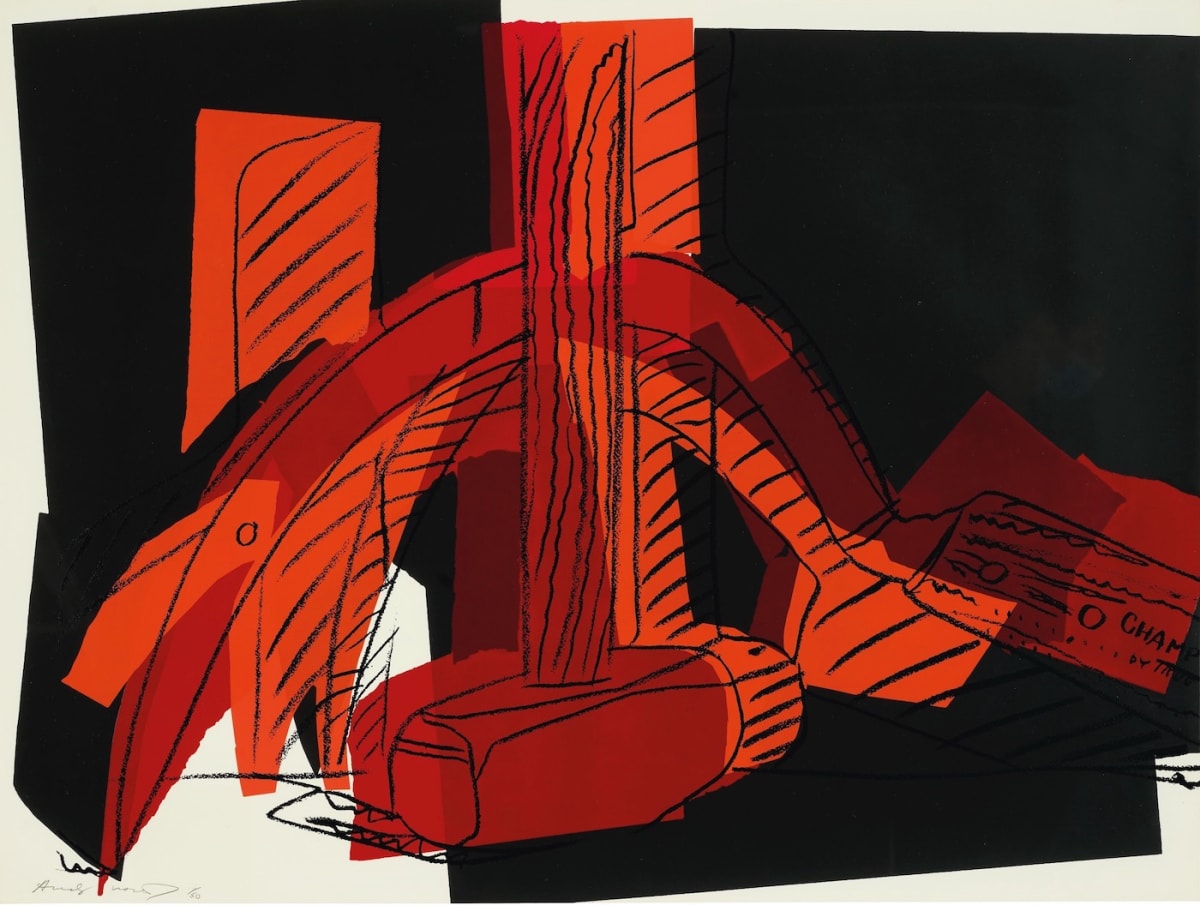
In the artistic tapestry of Andy Warhol's prolific career, "Hammer and Sickle" stands as a unique and intellectually charged portfolio of four screenprints, self-published by the artist in 1977. These prints vividly depict the iconic socialist emblem of the hammer and sickle, famously emblazoned on the Soviet Union flag and symbolizing international Communism. However, Warhol's interpretation goes beyond mere reproduction, as each large-scale print manipulates the positioning of the hammer and sickle, deconstructing and subverting the original symbol.
Arguably one of Warhol's most intricate and thought-provoking works in terms of iconographic reinterpretation, "Hammer and Sickle" invites viewers to delve into the complex layers of its symbolism. The hammer and sickle, while most commonly associated with the Soviet Union, has a rich history symbolizing the struggles of proletarian workers—individuals who relied on these tools for their daily labor. Warhol's fascination with this symbol was piqued during his tour of Italy for his "Ladies and Gentlemen" exhibition in 1975, where he encountered graffiti of the hammer and sickle adorning walls across the country. Left-wing sentiment was palpable among the Italian populace, and Warhol, always attuned to his environment, sought to explore this theme upon his return.
In collaboration with his studio assistant, Ronnie Cutrone, Warhol embarked on a quest to locate representations of communism in bookstores and shops. However, nothing seemed to encapsulate the essence of the symbol as effectively as an authentic hammer and sickle, purchased from a hardware store. The physicality and three-dimensionality of these tools added dynamism to the final works, as Cutrone meticulously arranged and photographed them, while Warhol judiciously selected the most compelling compositions for his artistic interpretation.
What distinguishes "Hammer and Sickle" is the profound irony of transforming a politically charged symbol into a commonplace, store-bought product, depicted in the realm of still life. The sickle, bearing the brand name 'Champion no.15,' serves as a stark reminder of this transmutation. Warhol's deliberate rearrangement of the tools, including the inversion of the sickle and its placement in front of the hammer, disrupts their original and widely recognized configuration. This transformation renders them both literally and conceptually subverted. So pronounced is this autonomy that in some prints (such as 11.165 and 11.166), the hammer and sickle fragment or completely vanish against a stark white background, devoid of the propagandistic colors of red and black.
While "Hammer and Sickle" is not the first instance of Warhol engaging with communist symbolism—recall his silkscreens and screenprints of Chinese communist leader Mao Zedong five years prior—it sheds light on his perpetual fascination with powerful images that defined the 20th century. These images, whether Marilyn Monroe, John F. Kennedy, or in this case, the Hammer and Sickle, held a certain reverence, albeit for distinct reasons. Warhol's genius lay in his emotional and artistic detachment from these symbols, transcending their political and social contexts to create enduring, entirely new symbols. In doing so, he provoked audiences to confront these emblems with fresh perspectives, inviting us to reconsider their profound meanings and the ever-shifting landscapes of our cultural and political consciousness.
Lenin (F & S II.402 - 403)

In 1987, against the backdrop of the waning years of the Soviet Union, Andy Warhol crafted "Lenin," a screenprint that cast an unflinching gaze at one of the most iconic figures of the 20th century, Vladimir Lenin. Created more than half a century after the leader's passing, this work showcases Warhol's unparalleled ability to appropriate a historically charged image and place artistic form at the forefront, relegating political engagement to the shadows.
Warhol's fascination with the aesthetic of socialism had already manifested in his "Hammer and Sickle" series of 1976, a portfolio devoted to the potent symbol of the Soviet flag. These symbols, emblematic of power and control, held a unique allure for Warhol. Rather than engaging in political discourse, he maintained a deliberate distance, choosing instead to explore the immense influence and celebrity status associated with political leaders and symbols. As his close associate Bob Colacello noted, "politics... combines two of the themes that interested Andy most... politics and fame."
In "Lenin," Warhol employs a stark black background, causing Lenin's suit to dissolve into negative space, giving the impression that his visage hovers ominously over the viewer, much as he once loomed over the people under his rule. The only elements accented in red are Lenin's face and hand, endowing them with a sense of malevolent and omnipotent authority. His hand, resting upon a book, possibly symbolises Lenin's commitment to dialectics, as outlined in his own writings.
The source image for Warhol's portrait is a photograph taken by Pavel Zhukov, now housed in the Central Lenin Museum in Moscow. Notably, even this original photograph underwent manipulation and doctoring; it initially depicted Lenin alongside other Soviet comrades. In keeping with the norms of the leadership, those deemed traitors were systematically erased from all historical photographs. This photograph, inherently propagandistic in nature—given Zhukov's role as the chief photographer of the Petrograd military district—reveals another layer of the violence that lurked behind the lens. Official photographs like these, as well as idealised paintings of Lenin, were ubiquitous, contributing to the creation of a colossal cult of personality. Warhol's screenprinting reproduction, rendered in haunting colours, lays bare the inherent violence while simultaneously accentuating the essence of the image itself.
Warhol's apparent nonchalance in appropriating a controversial leader, detached from historical and social context, paradoxically serves as a form of resistance against the Soviet Union's censorship of art. This defiance adheres to the doctrine of "art for art's sake" rather than realism. As an artist who lived through the Cold War era, Warhol's unapologetic American commercial and capitalistic sensibility stands as a bold rejection of Soviet dogma.
In the twilight of his illustrious career, Warhol's "Lenin" portraits represent a resounding and audacious proclamation. They underscore that his power to provoke and create arresting imagery remained undiminished over the decades. As the Iron Curtain began to draw back, Warhol's "Lenin" became a symbol of art's enduring capacity to transcend political boundaries and communicate with audiences on a visceral and timeless level.
.
Discover our selection of Andy Warhol prints for sale and contact Andipa Editions via sales@andipa.com or call +44 (0)20 7589 2371 for further information.
